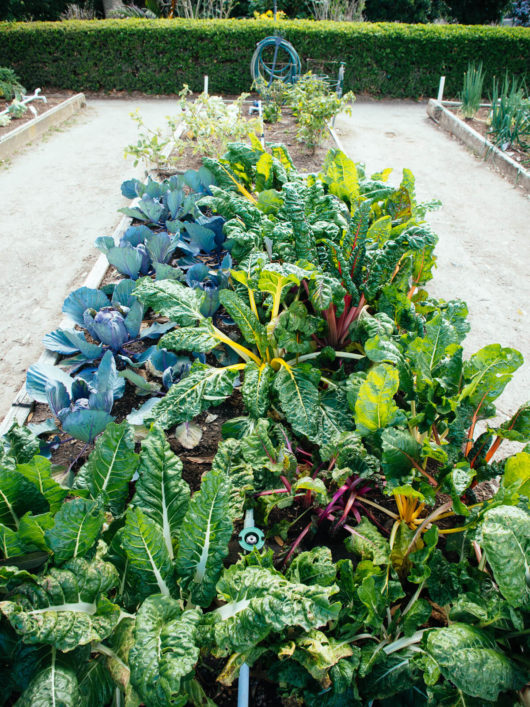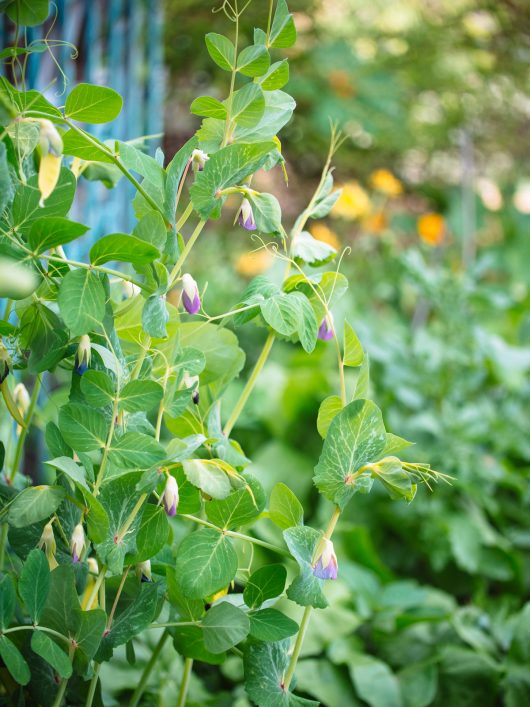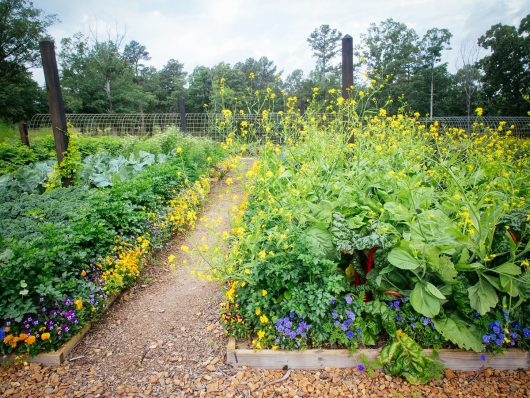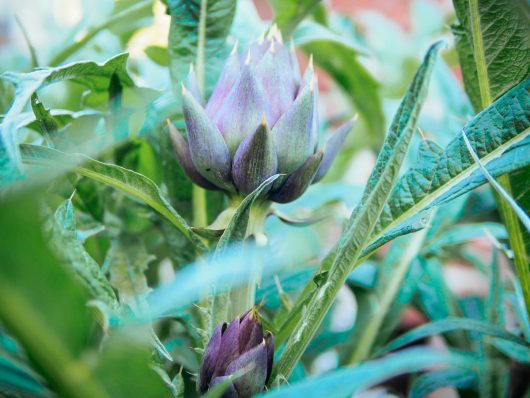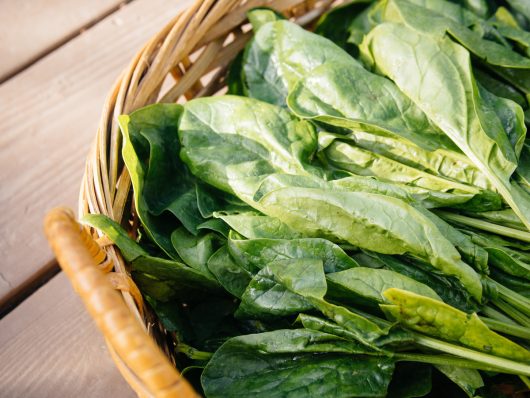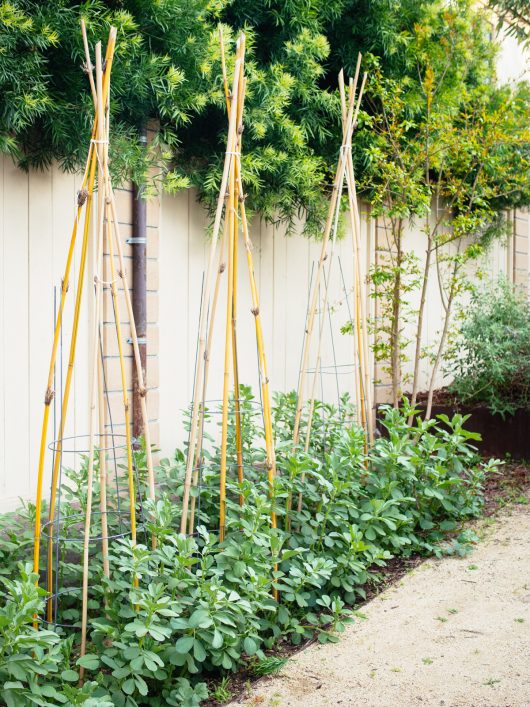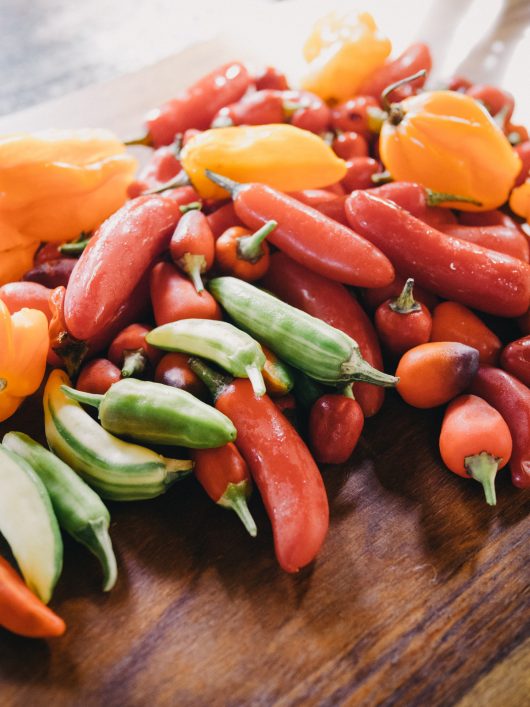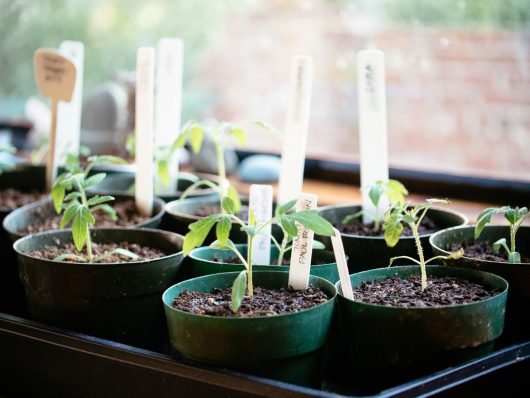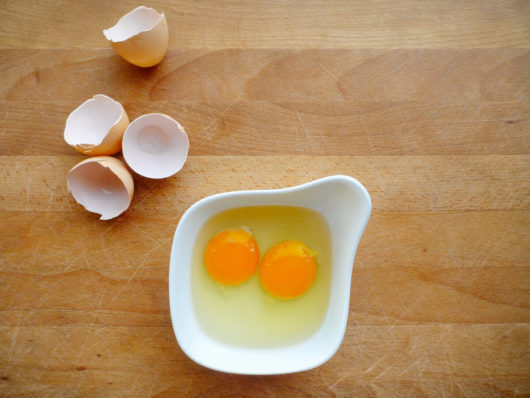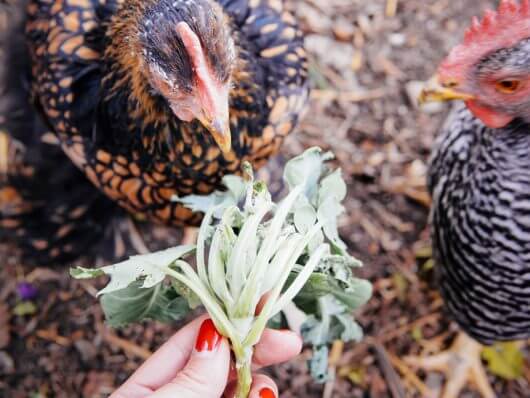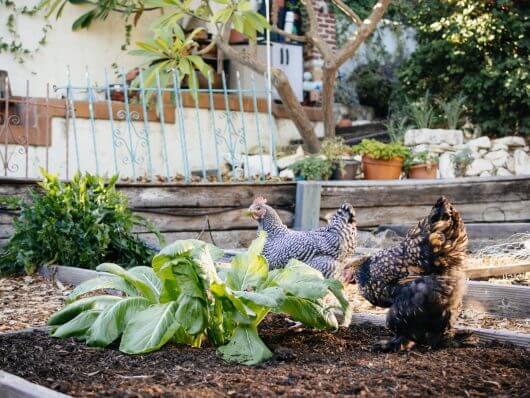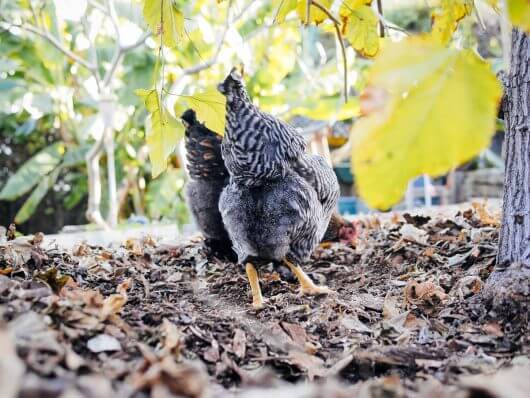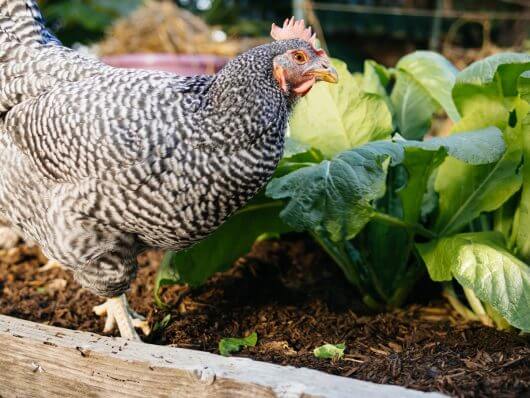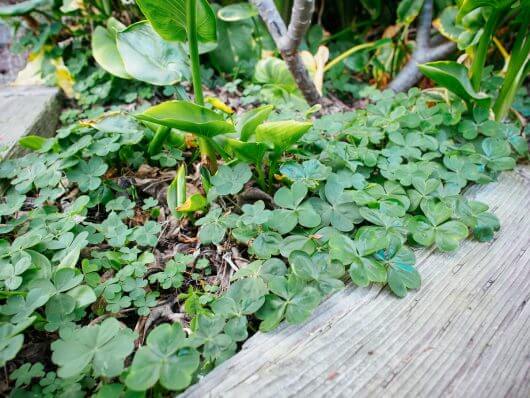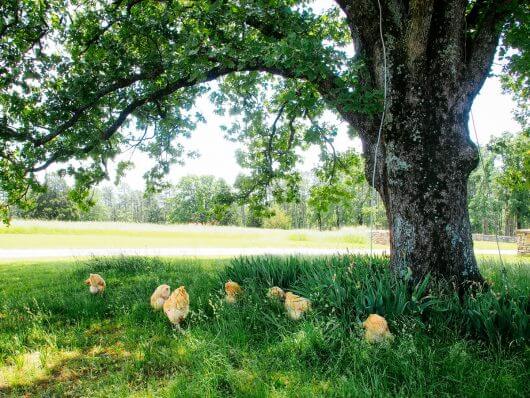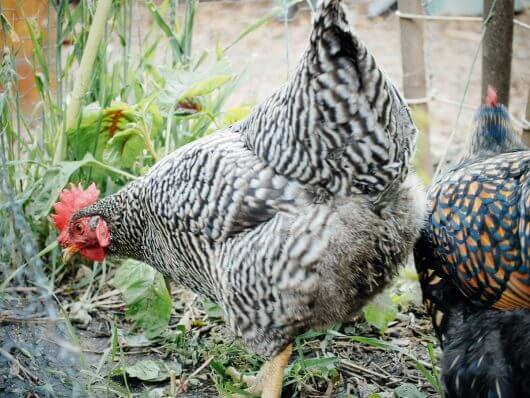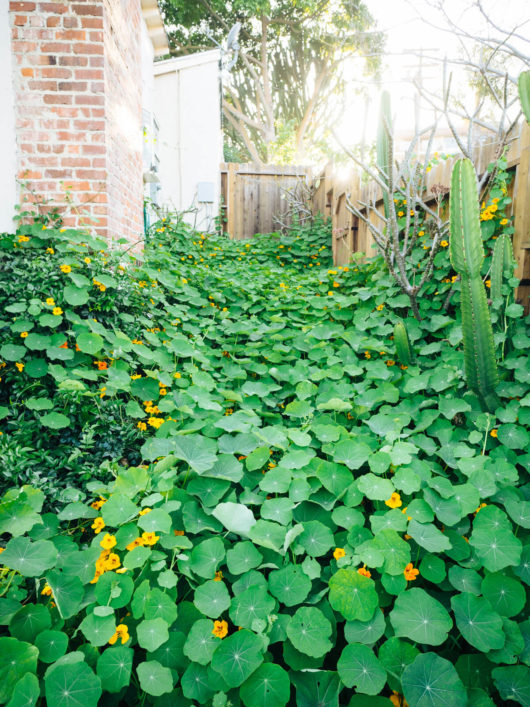
When we think of ground covers, we often think of things like grasses, sedums, and other fast-spreading, low-growing plants that cover or creep along the earth. Essentially, they function as living mulches to reduce weeds and retain moisture by blocking sunlight.
But in a vegetable garden, where I’m trying to maximize production of my land in a way that’s beneficial to the ecosystem as well, I sometimes feel like a layer of mulch — even if it’s organic mulch like compost or straw — is a wasted opportunity to do something more.
There’s no denying the importance of mulch: In addition to smothering weeds and conserving water, it reduces soil erosion and helps curb the spread of disease in a garden (by preventing soil from splashing back up onto the leaves). It also keeps the garden neat and tidy, and most organic mulches eventually break down and add nutrients back into the soil.
But is there a better way to mulch in a vegetable garden so you can fully utilize every square inch of growing space?
Yes! Try edible ground covers.
Intercropping with Edible Ground Covers
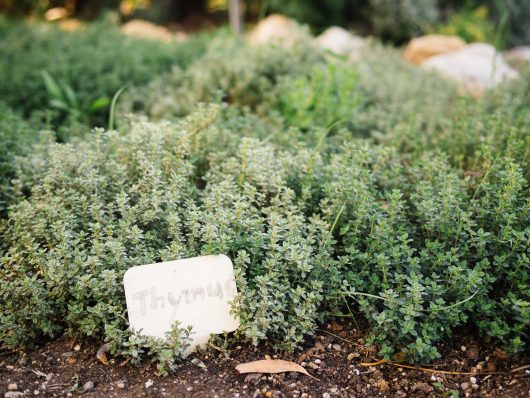
In a way, planting edible ground covers in the patches and rows between your vegetables is a type of intercropping (also known as interplanting).
Intercropping is the practice of growing multiple crops within the same space in order to achieve a greater yield from land that otherwise would be left unused by a single crop. Usually, vegetable gardeners will tuck quick-growing crops like lettuces and radishes under taller and slower-growing crops like tomatoes and peppers.
While these early-maturing varieties make good understory plants, they need to be reseeded often so you’re not continually left with bare soil after every harvest.
A better option in a vegetable garden is to grow long-season annuals or non-aggressive perennials that stay low to the ground, don’t compete for nutrients, and have other benefits like attracting pollinators or repelling pests.
Here are my five favorite ground covers for vegetable gardens that are not only ornamental, but edible as well.
Easy-Care Edible Ground Covers

1. Nasturtiums
Most people think of nasturtiums (Tropaeolum majus) as flowers, but they’re also vegetables in their own right. (See my recipes for nasturtium pesto and poor man’s capers.)
These self-seeding annuals grow quickly on long, thin vines that drape over garden beds beautifully. Their lush green leaves are reminiscent of lily pads, and when they bloom, the flowers attract pollinators all day long, making them a good option as a ground cover for berries, cucumbers, and other crops that need more than just wind for pollination.
Nasturtiums are also highly attractive to aphids, which may sound like a nuisance to some, but this is what makes them such a great trap crop — that is, a crop that’s sacrificed in order to keep aphids off your more valuable crops. Plant them around susceptible crops and as soon as you see an infestation on your nasturtiums, pull the affected leaves so the aphids don’t jump to your other plants.
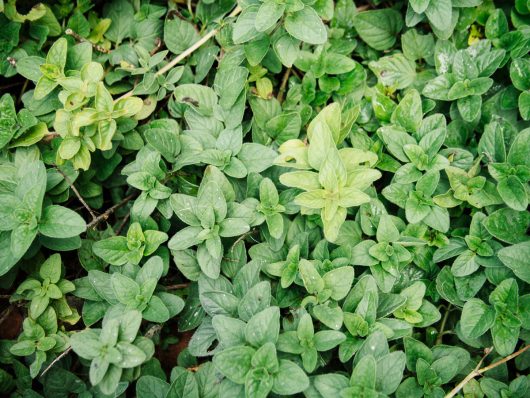
2. Oregano
Herbs like oregano (and its Mediterranean cousins, thyme and marjoram) are ideal for in-ground garden beds that see some foot traffic. They can tolerate a little trampling and still be effective as a ground cover. As a bonus: Stepping on oregano releases its fragrance into the air, and it’s these same aromatic oils that repel insects like mosquitoes and fleas.
Oregano (Origanum vulgare) is a loose, open plant that can grow up to 2 feet tall, but likes being pinched back to maintain a low and bushy growth habit. Creeping oregano (Origanum vulgare ‘Humile’), on the other hand, quickly spreads to form a dense mat under 3 inches tall. Bees love the clusters of delicate flowers that bloom in summer. (For humans, the flowers make a fragrant and pretty garnish for soups, salads, and other dishes.)
The herb is a cold-hardy, drought-tolerant perennial (often surviving freezing temperatures) and needs well-draining soil and full sun. That means it should only be used as a ground cover for plants with similar water needs, such as chard, okra, and artichokes. It also grows well with deep-rooted plants that don’t need to be continually saturated.
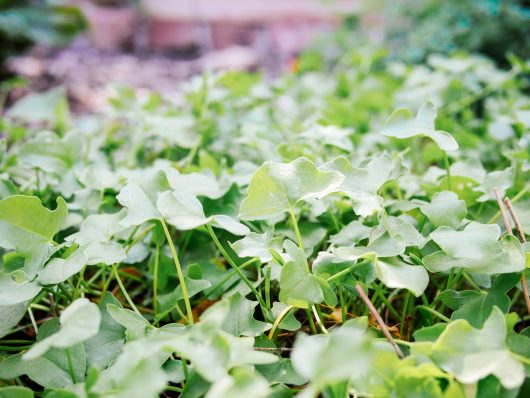
3. True French Sorrel
True French sorrel (Rumex scutatus) is what I sometimes call the uncommon sorrel, in contrast to the common sorrel or garden sorrel (Rumex acetosa) that’s more readily available in garden centers. (I wrote more about True French sorrel here, if you want an in-depth profile of this ancient herb.)
The plant is a low-growing hardy perennial with distinctive shield-shaped leaves. A couple of small plants will quickly grow into a patch less than 12 inches tall. In my own garden, where I planted True French sorrel in a bed that received partial shade, it stayed under 6 inches tall.
I love to grow it because it’s low-maintenance, not so common, and has a lemony flavor that’s unlike anything else in my garden. As a ground cover, it stays a brilliant green year-round and the clumps can be lifted, divided, and replanted elsewhere when you need to fill in some space in your beds.

4. Alpine Strawberries
Unlike garden strawberries (Fragaria ananassa), most varieties of alpine strawberries (Fragaria vesca) don’t self-propagate via runners, making them a friendly option for intercropping.
Since alpine strawberries produce tiny (yet delectably sweet and fragrant) fruit, many gardeners skip them in favor of big, juicy garden strawberries because they find the smaller, near-wild cultivars aren’t worth the effort. And it’s true that you would need several plants to harvest a single cup of alpine strawberries. (I promise that it is worth the effort once you’ve tasted them! Read more about the Yellow Wonder variety I grew in my garden.)
As an edible ground cover, however, alpine strawberries tick off all the boxes: tough yet non-invasive, and able to tolerate a variety of soil conditions (especially if you forget to water for a short spell). They have a low growth habit and tend to hold fruits up high, often above the leaves. And because of its pale color, Yellow Wonder, in particular, doesn’t attract birds the way bright red strawberries do.
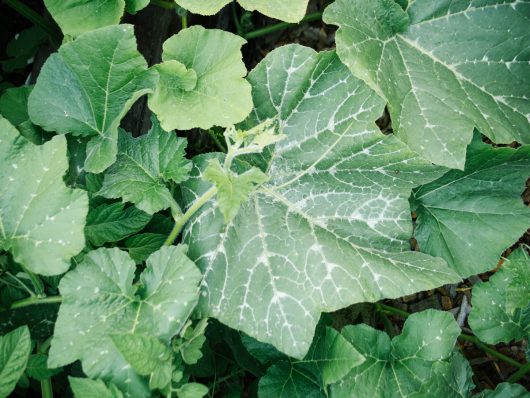
5. Squash and Melons
If you’ve ever grown a Three Sisters garden (learn more about this Native American planting method, with suggested layouts for your own Three Sisters), then it should come as no surprise that squash and melons (Cucurbitaceae family) make excellent ground covers for large open spaces.
And that’s the key: They should only be planted in large open spaces, otherwise they could make it difficult for you to harvest your other crops (not to mention the amount of real estate they take up). The sprawling vines are thick and prolific (which is what makes them so effective as a ground cover) and have a tendency to climb, so they should be kept away from structures where their habit isn’t desired.
In small spaces, consider planting another cucurbit as an edible ground cover: cucumbers. Though we usually think of them as climbers, cucumbers grow perfectly fine along the ground. They still produce vigorous vines, but the smaller leaves and smaller fruits make them more manageable than squash and melons. Compact varieties like Mexican Sour Gherkins are another good option to try.
The post Edible Ground Covers for Vegetable Gardens appeared first on Garden Betty.

Sponsored by

ClassyGroundcovers.com helps you beautify your world with stunning and exotic perennials, and offers Free Shipping. Customers rate them 4.9 stars at Google and top 30 out of 7000 at DavesGarden.com, take 20% off your order with discount code "gardenbetty" (expires May 31, 2018).
from Garden Betty https://ift.tt/2F00NcY
